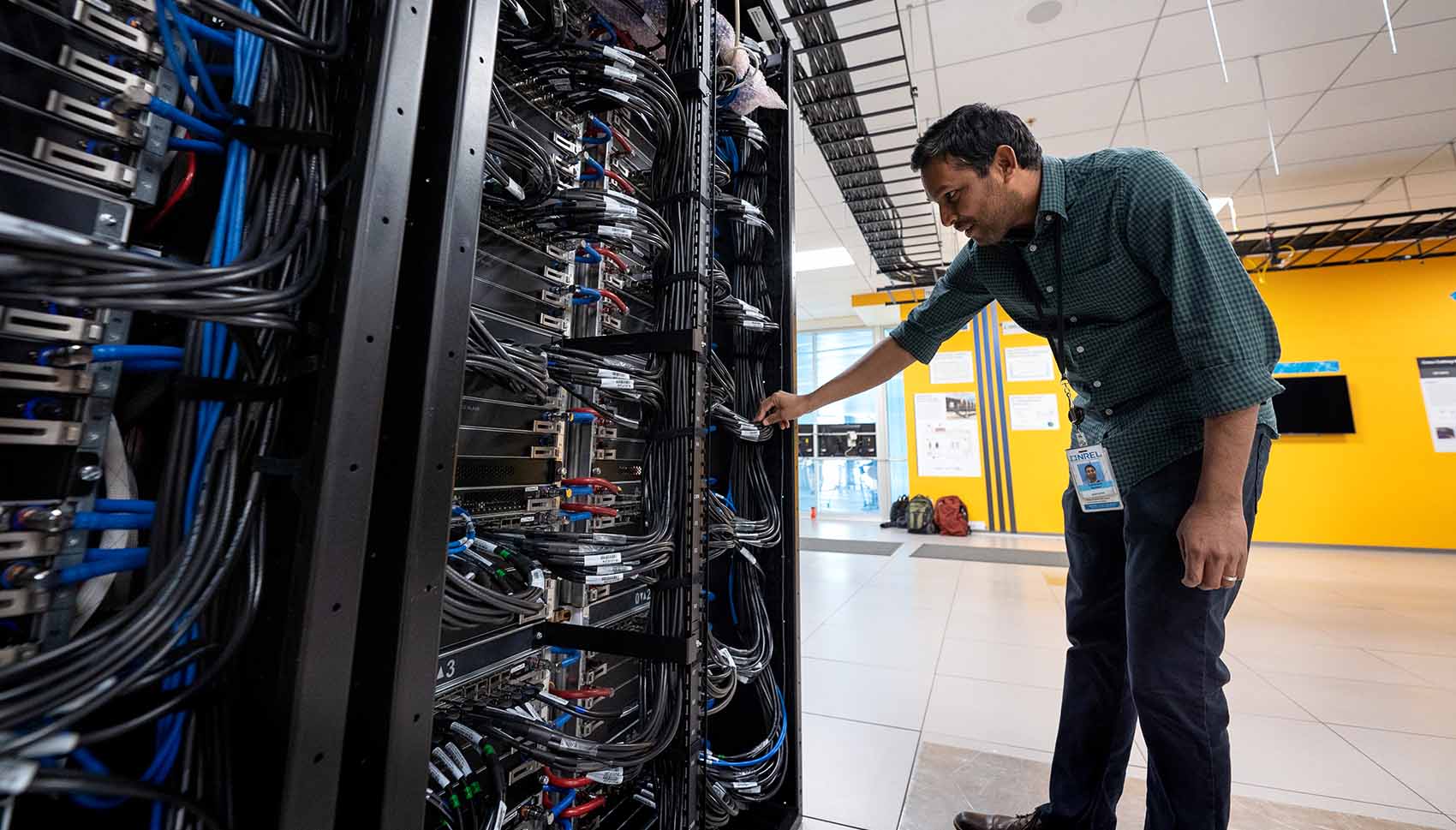Students Harness Power of New Kestrel Supercomputer for Cutting-Edge Energy Research and Innovation

Students pursuing careers in energy research had a unique opportunity this year to use Kestrel—the U.S. Department of Energy Office of Energy Efficiency and Renewable Energy's (EERE's) third-generation supercomputer hosted by the National Renewable Energy Laboratory (NREL).
This summer, NREL completed the full buildout of Kestrel, reaching 44 petaflops of computing power focused on renewable energy and energy efficiency research. Students from across the country were invited by EERE to apply for access to this powerful tool to advance their research and to expand EERE's computational efforts for the energy transition. Last fall, over 25 students from 15 universities across the United States applied to use Kestrel for the 2024 spring and summer semesters.
Students like Yifan Hu at Iowa State University used Kestrel to study the effect of solar wind and other space weather phenomena on solar energy infrastructure. Using the supercomputer's advanced central processing unit nodes, his team tested new scalable algorithms to provide robust and accurate methods to model solar wind using a numerical method called the relativistic Vlasov-Maxwell system, with the goal of understanding the effects of solar wind on the stability and efficiency of solar power plants to improve power grid reliability and resilience. Access to Kestrel enabled Hu to receive computing results within a week, which led to the submission of two journal articles currently under review.
Rajat Goel, a chemical engineering student at the University of California, Davis used Kestrel's high-performance graphics processing units to simulate uranium and its defects, an extremely complex problem that requires significant computational power. Goel researched developing future protective coatings for nuclear reactors to prevent uranium hydride formation, as it is highly toxic and incredibly flammable. Using Kestrel, he significantly reduced the time needed for these simulations. Nuclear energy plays a role as a noncarbon energy source by generating carbon-free power. Ensuring its safe and reliable production is an important factor toward achieving the Department of Energy's 2050 net-zero greenhouse gas emissions target.
Hu and Goel's research projects highlight Kestrel's ability to address large-scale challenges, particularly in enhancing energy resiliency. Meanwhile, across the country, students used the supercomputer for different yet equally impactful energy research.
Stanford University student Mark Benjamin used Kestrel's advanced artificial intelligence (AI) and machine learning capabilities in his manufacturing research project to apply AI models, including convolutional neural networks to model drag and convolutional autoencoders to represent realistic car shapes. The project goal was to set new standards for vehicle design and optimization, aiming to improve fuel efficiency and reduce carbon emissions.
Students from the University of Minnesota, led by Suryanarayan Ramachandran, used computational fluid dynamics codes on Kestrel to design novel engines that use hydrogen for combustion. This project leveraged an Exascale Computing Project code called AMRex Combustion PeleC to perform first-of-its-kind high-fidelity three-dimensional simulations of explosive hydrogen reactions, called oblique detonation waves, to investigate how hydrogen combustion can be used for future hypersonic propulsion systems, advancing fuel technologies research to reduce fossil fuels.
Tackling complex energy challenges requires powerful computational resources along with support to ensure the productive use of these resources. Students received help getting their accounts set up and running their workflows on Kestrel from the User Operations staff in the Computational Science Center at NREL. Providing students with access to Kestrel not only advances current research but also shapes the future of clean energy technologies by equipping students with advanced skills to lead in the field of energy innovation and research.
Apply now for Kestrel student allocations! United States undergraduate and graduate students have until Nov. 30, 2024, to submit applications for EERE mission-related research. Learn more details about Kestrel student allocation requests.
Read blog posts about the installation of NREL's Kestrel high-performance computing system.
Last Updated May 28, 2025
